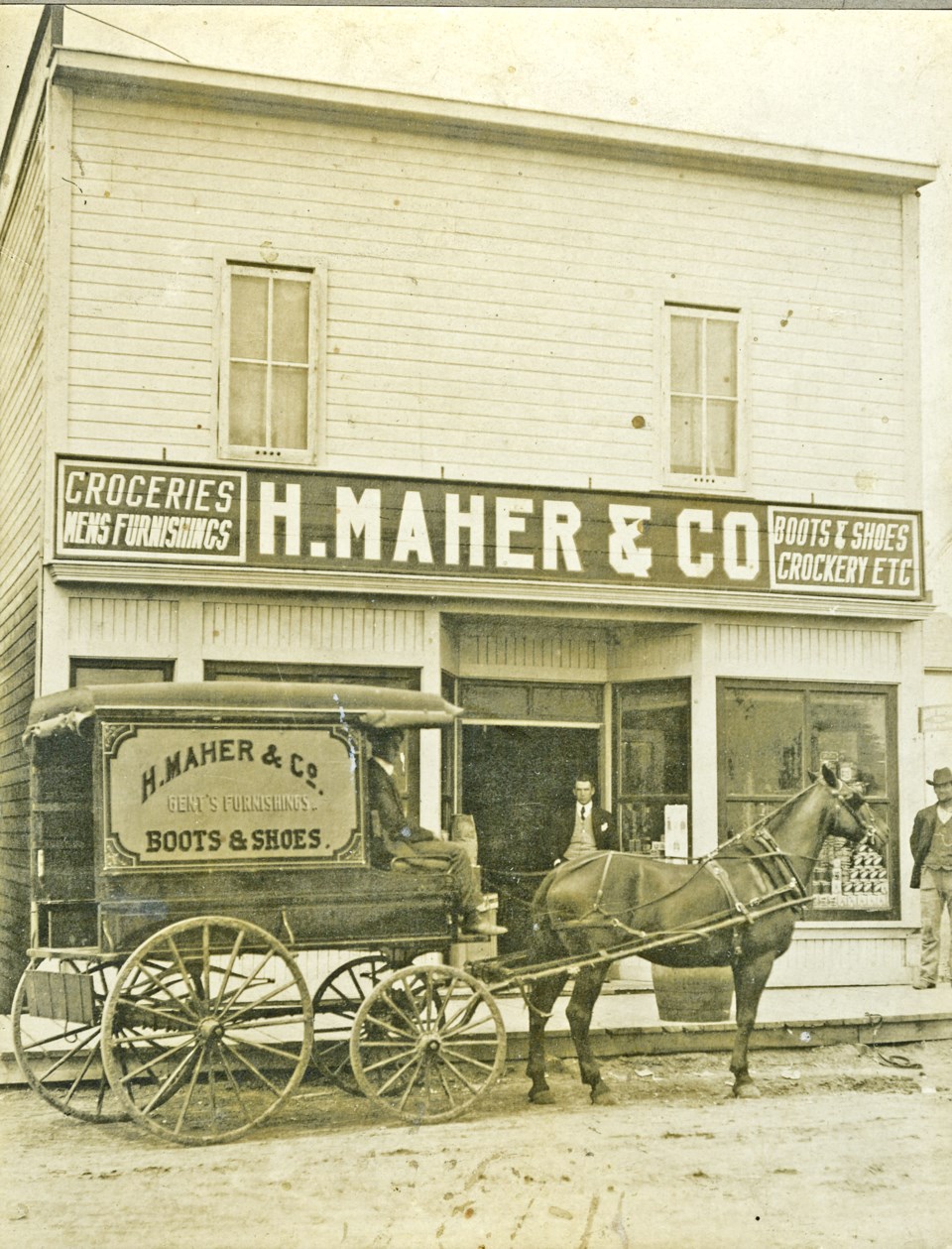In 1913 the city of North Battleford was a divisional point on the Canadian Northern Railway on the mainline between Winnipeg and Edmonton. The community was growing rapidly and many things were needed. Besides electricity, schools, churches, hospitals, homes and other things like sidewalks, there was need for stores. As a result, privately owned small stores started appearing. We like to think of them as the small “corner stores.”
Early stores had poorly lit, damp cellars, built on streets with minimal or no gravel or maybe cinders and no indoor plumbing, so “honey wagons” emptied the outhouses. Coal and wood was delivered by horse-drawn wagons, as was water, which was sold by the barrel. Ice was the only coolant available and was cut in blocks from the North Saskatchewan River and delivered to the city.
These stores were built within walking distance of a school. The family lived upstairs, at the back of the stores or in a house nearby. Store hours were long. Few people had phones or cars.
We must remember life was not easy then. The people had lived through the First and Second World Wars when the men and boys went to war. In between was the Depression of the 1930s. House fires occurred occasionally, often taking a life and chimney fires were common. There were epidemics of typhoid, diphtheria, measles, chicken pox and the flu – with no medical coverage. Tuition had to be paid at some schools in order for the children to attend.
Small stores were convenient for mom to send the children to pick up last minute items, maybe a brick of ice cream for dessert when unexpected company arrived or sealer rings or maybe sage for dressing.
Do you remember the bell that rang when you entered the store, the coiled sticky paper hanging from the ceiling to help control the flies and the string and roll of brown paper used for wrapping?
Remember too that each order was written by the clerk, totalled in their head and they retained a carbon copy of every receipt. There was the scale, meat slicer, rolls of cheese, cash register, adding machines, the glass display case and the counter, the shelves of canned goods. Milk and pop were in glass bottles. Apples, pears, peaches, apricots and other fruit came in season and mothers were kept busy canning. The boxes from the fruit were recycled making many handy articles. The bags from the flour and sugar also had many uses.
The store owners ordered from the local wholesalers – Western Groceries, Macdonald Consolidated and Dominion Fruit — and their orders were delivered to the stores as were orders for Coke, Pepsi, bread and milk.
Credit became a problem to the storeowners when customers did not or could not pay their accounts.
In the early days orders were delivered by horse and cart, then later by bike, wagon, truck or van.
The delivery boys were great help to the storeowners and have many pleasant memories and maybe a few not so pleasant. It goes without saying the customers appreciated delivery boys, too.
Things really changed when the big stores started to appear. On Feb. 22, 1930 the Safeway store opened at 1171 - 101st (King) St. and a few weeks later a second Safeway store opened at 995 - 101st St.
It’s rather sad that corner stores have almost disappeared. They did a wonderful service to our community and we appreciated their long hours, their friendships and great memories. We thank them.



